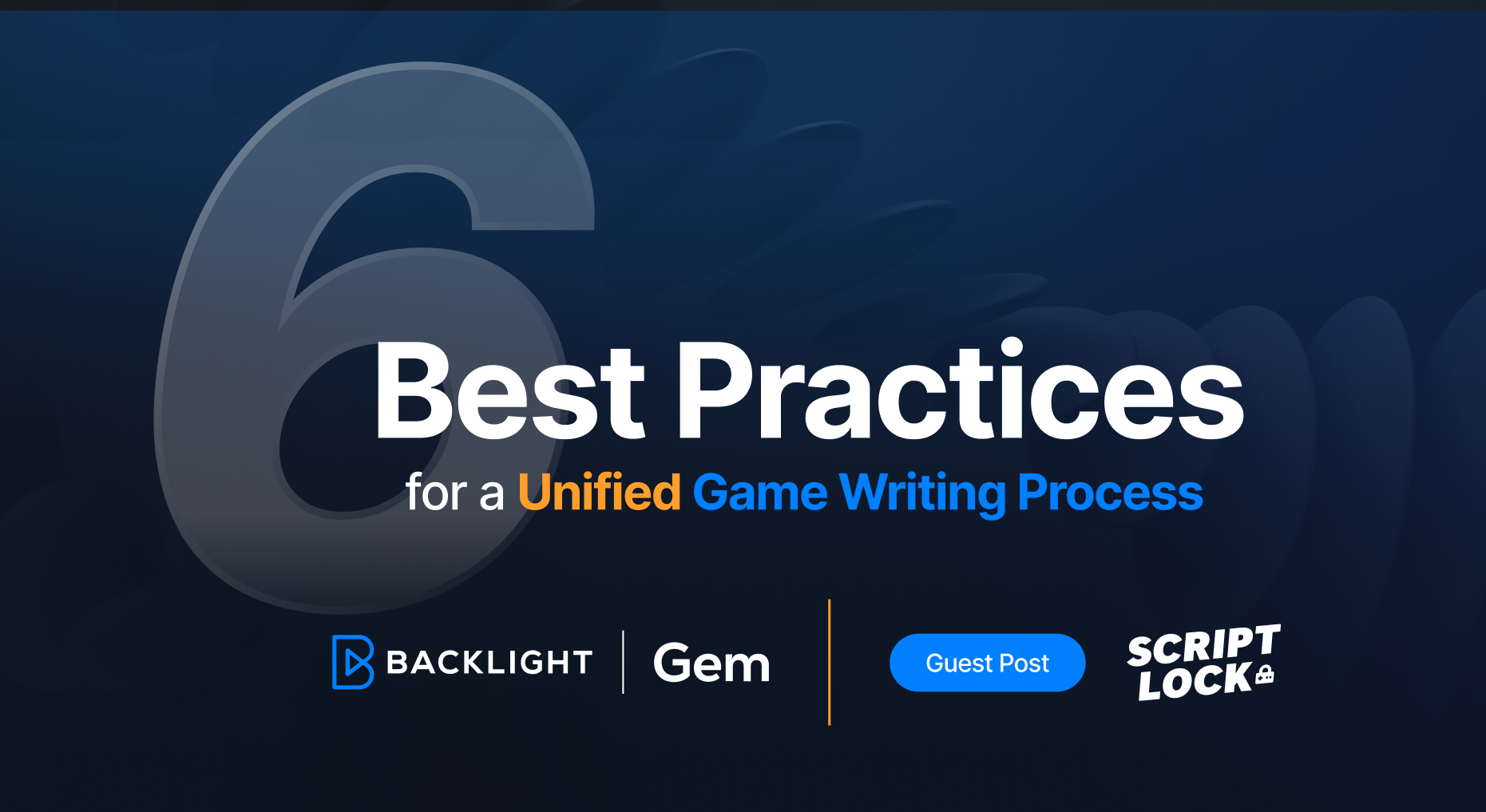
This guest post comes from Nick Folkman, Advanced Writer at Insomniac Games, and Max Folkman, Senior Narrative Writer at Riot Games. As hosts of the Script Lock podcast, they engage with industry professionals on video game storytelling. Here, Nick and Max share their tips to create a seamless narrative workflow and collaborative game writing experience.
Hi! When we were asked to write up a blog post for Gem, we tried to think about what kind of topic would be the most useful to writers and narrative designers, and the word that kept coming up was collaboration. Video games are inherently a collaborative medium with the relationship between the player and the developer, but also between every member of the development team when it comes to telling stories.
Obviously writers and narrative designers are the ones handling any game’s story, but everyone from the UI artists to the sound designers have a sizable influence in how those stories are experienced by the player. Thus, being able to collaborate effectively with others is an extremely important part of the job, and so we thought that we’d talk about some best practices for collaboration across the writing pipeline.
#1. Have a vision for what you want to do
You need some kind of path to focus on so that you have something in which to base your decisions off of. You can’t be at the mercy of everyone else’s choices because you’re one of the people (or possibly THE person) in charge of making sure the story works, and if you’re just going with the flow of what everyone else wants, then the story will feel disjointed at best and schizophrenic at worst.
#2. Be open to new ideas
We know we just said you need to have a vision, but that doesn’t mean you always have to shoot everyone else’s ideas down. Unless you’ve managed to work at a place that doesn’t have deadlines and you have all the time in the world to think of everything on your own, it can only help you to put down a ‘We’re open!’ sign in your mind when new ideas come ‘round. You don’t have to accept all or any of them, but maybe they’ll spark a better idea. Maybe they’ll solve a different problem you were having. Or maybe they’ll actually be a better idea than what you were thinking of originally.

#3. Make others feel like they’re a part of the process
This is somewhat related to the previous point– when you’re open to new ideas from others, it makes them feel like they have a hand in the story too, which is important if they’re the ones actually helping you make that story beat into a real thing (like an animator working on a cine of yours, or a designer building out one of your levels).
Likewise, if they suggest something and you don’t think it’ll work, that’s okay! The important thing is to listen to their idea(s) and explain the thought process and reasoning for why that won’t work for the story. Maybe it’ll lead to a better idea, but even if it doesn’t, the main thing is that you’re treating them as a true collaborator, and not just shooting them down from the get-go. When people feel like they’re truly a part of the thing they’re making, especially if they have a hand in something as big as a game’s story, it can be incredibly energizing.
#4. Don’t strive for perfection
If you’re just working by yourself on your own thing, do whatever you want, but the bigger your project gets, the more dangerous and unsustainable perfectionism becomes. The perfection of one piece of dialogue, or a scene, doesn’t make the game. It’s better to get to 80% of what you and your collaborators think is “good” and then reassess with the rest of the project in mind. Everyone has a different definition, and you’ll be happier and healthier not chasing it.
#5. Rely on each other’s strengths
You’re all different people, with different backgrounds and interests, so embrace that! One of the beauties of collaboration is seeing the choices other people make that you may not have, and sometimes not only do they work, but they can end up inspiring you to make new choices. This isn’t to say that if Person X is better at dialogue and Person Y is better at narrative design, that Y shouldn’t feel comfortable about asking to write more dialogue. They should! But in that case, it’d be great for X to perhaps take point on giving feedback to better help improve Y’s skills. To that point…
#6. Practice healthy feedback
We view feedback as a conversation that gives context to the “why” and not just the “what”. Upfront it’s great to ask what sort of feedback is being looked for, at which point it should be specific, direct (but not blunt), and framed around how the reader felt as opposed to assuming the writer’s intent (“what happened made me feel…” or “had this effect”).
When it comes to positive feedback, it does not need to always be paired with negative feedback, and we’ve also found that negative feedback tends to be specific, while positive tends to be more general (“I liked this line.”). Be specific with positive feedback! Tell them why this line or character worked for you, because it’s just as important for us to know what we’re good at as what we need to improve on.

That feels like a good enough list to start from!
This is by no means meant to be definitive or exhaustive, but hopefully helps more folks embrace collaboration with their team. We’re brothers, so maybe we’re just used to it, but we believe some of the most fun, and fruitful, surprises in the games we’ve worked on have come about through open collaboration with our teams.
Good luck!